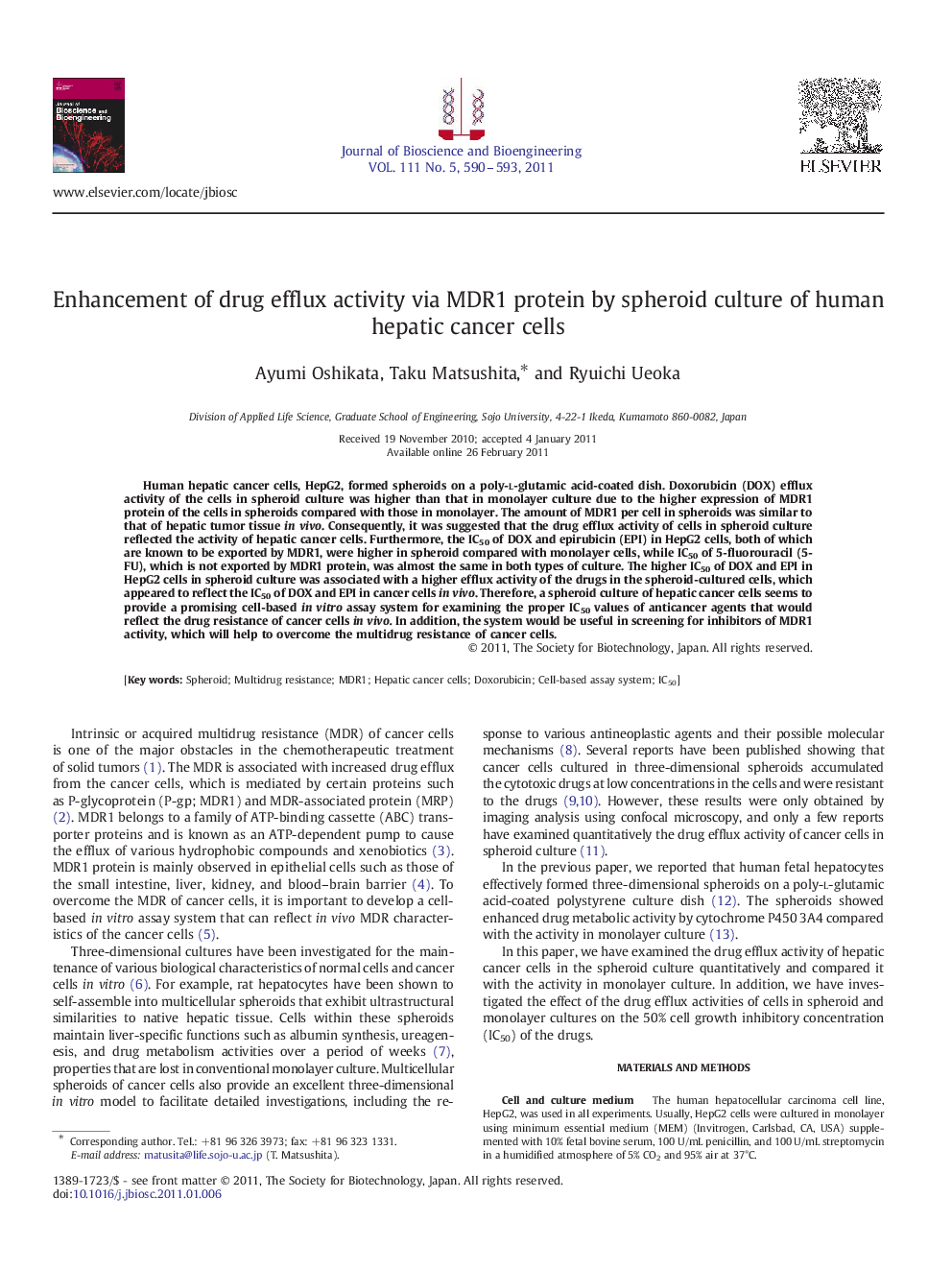| Article ID | Journal | Published Year | Pages | File Type |
|---|---|---|---|---|
| 21295 | Journal of Bioscience and Bioengineering | 2011 | 4 Pages |
Human hepatic cancer cells, HepG2, formed spheroids on a poly-l-glutamic acid-coated dish. Doxorubicin (DOX) efflux activity of the cells in spheroid culture was higher than that in monolayer culture due to the higher expression of MDR1 protein of the cells in spheroids compared with those in monolayer. The amount of MDR1 per cell in spheroids was similar to that of hepatic tumor tissue in vivo. Consequently, it was suggested that the drug efflux activity of cells in spheroid culture reflected the activity of hepatic cancer cells. Furthermore, the IC50 of DOX and epirubicin (EPI) in HepG2 cells, both of which are known to be exported by MDR1, were higher in spheroid compared with monolayer cells, while IC50 of 5-fluorouracil (5-FU), which is not exported by MDR1 protein, was almost the same in both types of culture. The higher IC50 of DOX and EPI in HepG2 cells in spheroid culture was associated with a higher efflux activity of the drugs in the spheroid-cultured cells, which appeared to reflect the IC50 of DOX and EPI in cancer cells in vivo. Therefore, a spheroid culture of hepatic cancer cells seems to provide a promising cell-based in vitro assay system for examining the proper IC50 values of anticancer agents that would reflect the drug resistance of cancer cells in vivo. In addition, the system would be useful in screening for inhibitors of MDR1 activity, which will help to overcome the multidrug resistance of cancer cells.
